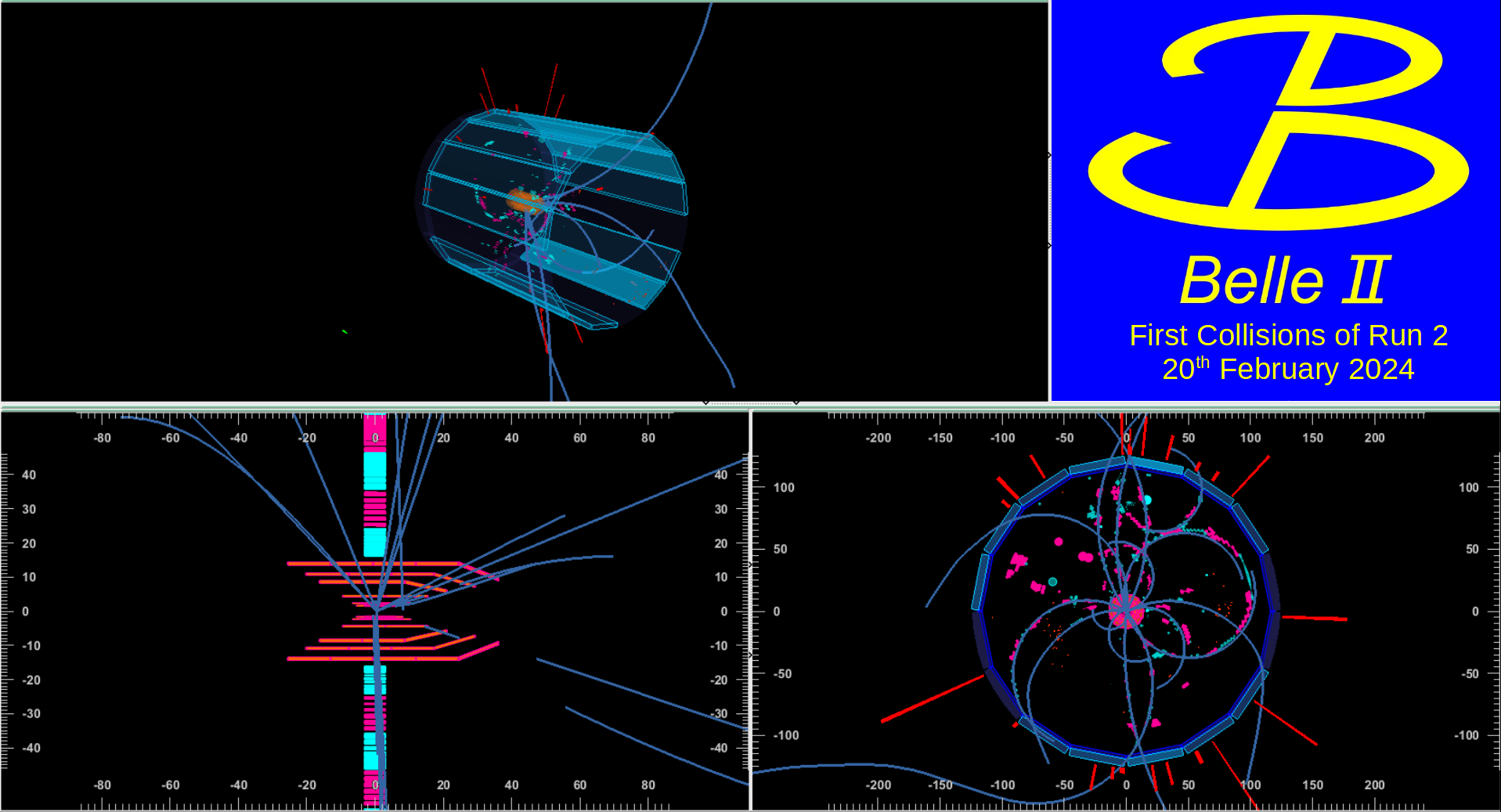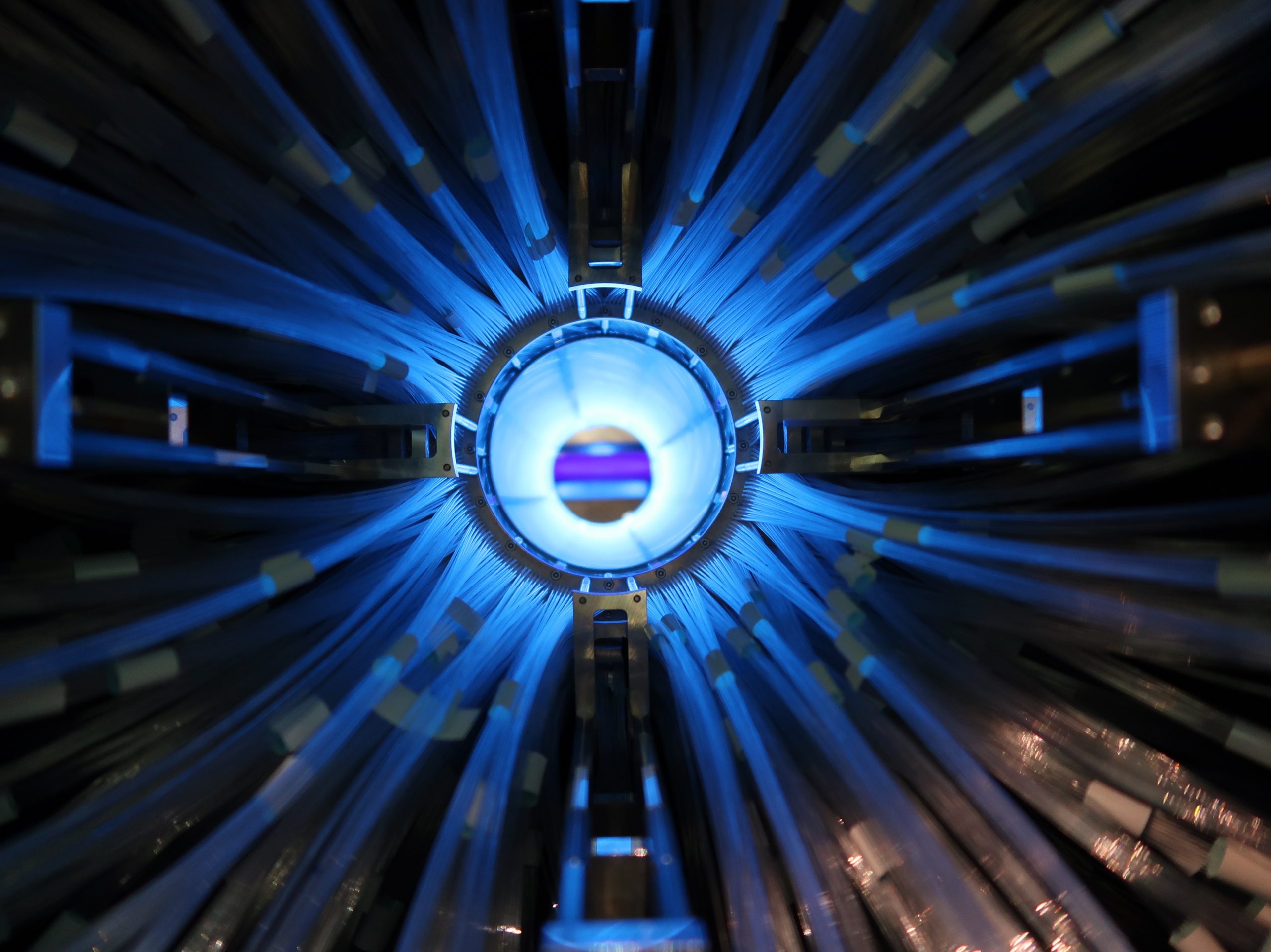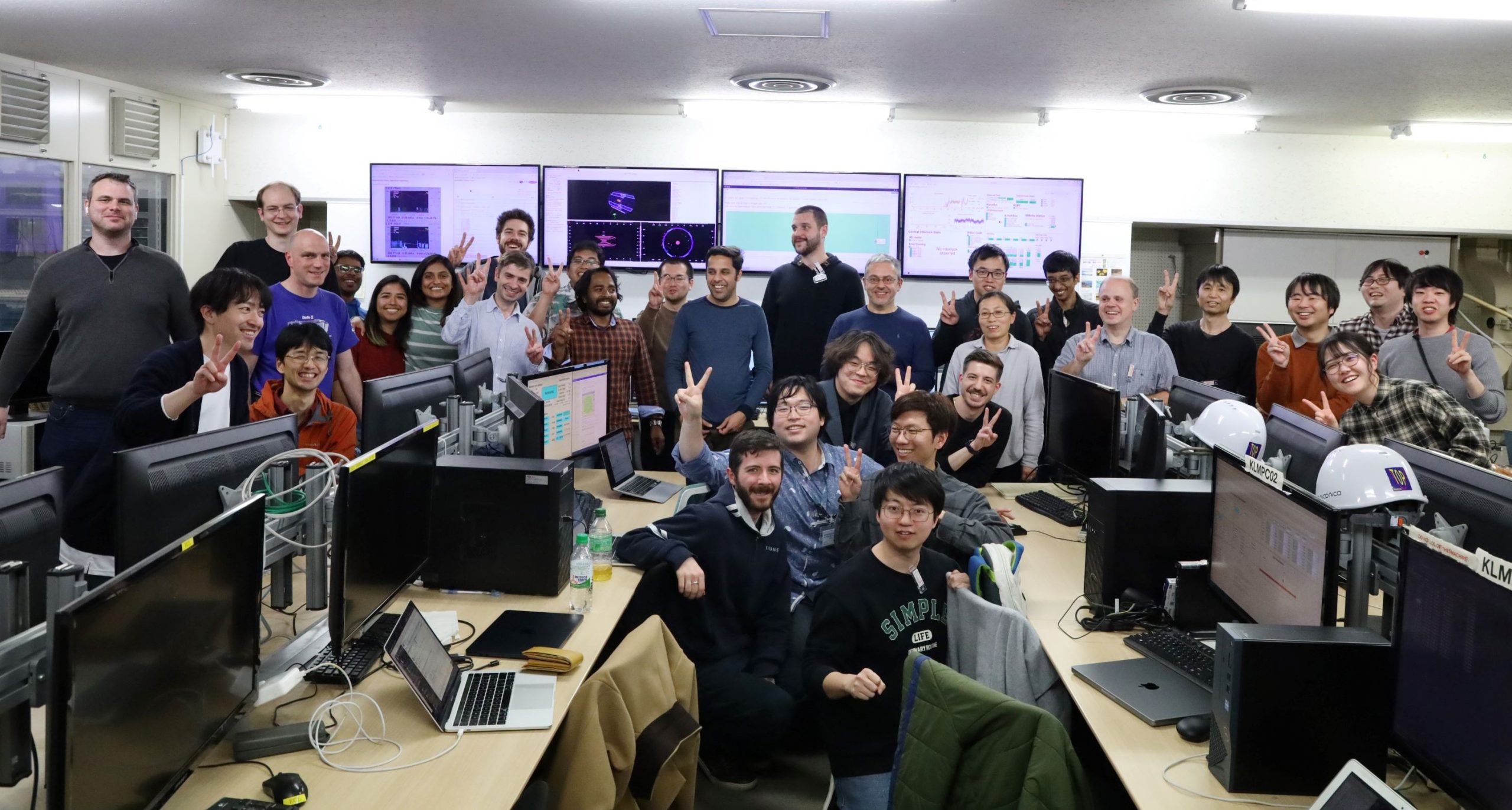- Topics
The SuperKEKB electron-positron collider has restarted operations: Observing the first collision events of Phase 3 Run 2 with the Belle II detector
February 21st, 2024
Belle II is a particle physics experiment aiming to uncover new physics phenomena that could be the keys to solving the mysteries of the origin of the universe, through precise analysis of the properties of B mesons and other particles produced by the SuperKEKB accelerator. The accelerator and detector were both upgraded during a long-shutdown that started in the summer of 2022, and the accelerator operations restarted on the 29th of January 2024. At 22:12 JST on the 20th of February, the Belle II detector recorded the first electron-positron collisions since the accelerator operation restarted.
During the long-shutdown, a new vertex detector, incorporating a new fully-implemented pixel detector together with an improved beam pipe at the collision point, was installed in the Belle II detector; this will allow it to better handle the expected increases in luminosity and backgrounds originating from the beams. Furthermore, the radiation shielding around the detector was enhanced, and other measures to improve the data collection performance were implemented.
Following the resumption of beam operations, the KEK accelerator team has been improving the vacuum in the beam pipe while increasing the currents of both the electron and positron beams circulating in the SuperKEKB accelerator main ring. Ensuring stable beam operations, the accelerator tuning of the electron-positron beams for collisions at the center of the Belle II detector finished successfully. Then, the baton was handed over to the Belle II group. They began to raise the high voltage on its subdetectors to allow them to observe particle interactions at 22:12 JST on the 20th of February. The Belle II group saw many particle tracks originating from the interaction point on the Event Display, which shows reconstructed interactions occurring in Belle II and confirmed that this was a hadronic event. Some other types of events, such as Bhabha events, an electron-positron scattering process, were also observed before and after the first identified hadronic event.
-

One of the first collisions of Run2 observed in the Belle II detector.
Following the restart of beam operations and first collisions of this Run period, the Belle II experiment is now collecting new data. The initial goal is to exceed the size of the dataset recorded by the original Belle experiment, which will enable the collaboration to continue making world class measurements, with better performance and analysis methods. Further ahead, the long-term goal is to accumulate a dataset 50 times larger than that of the Belle experiment. As the size of the dataset increases, the Belle II collaboration will be able to precisely study particle behavior and search for physical phenomena beyond the Standard Model of particle physics.








